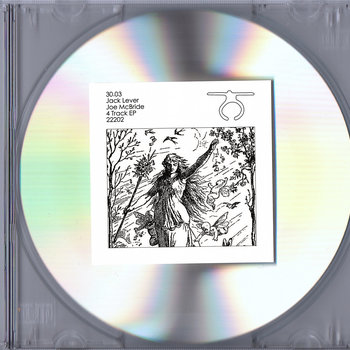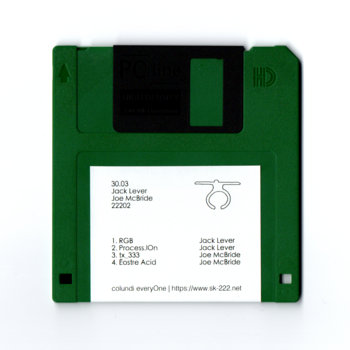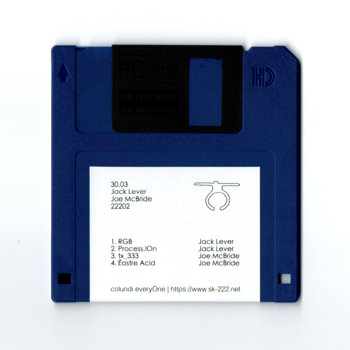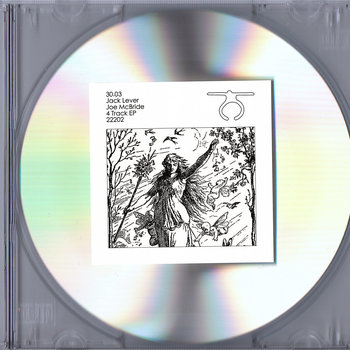 Illustrations by Patrick Saville
Illustrations by Patrick Saville
Electronic producer Aleksi Perälä, speaking from his home in Lahti in his native Finland, is doing his best to explain Colundi—a tuning system that rejects Western musical scales in favor of a series of resonant frequencies known as “the Colundi Sequence.” For the last few years, Perälä has been using the Colundi Sequence to create a startling amount of music—bubbly, beatific post-rave tracks peppered with curious melodies and a general sense of cosmic optimism. But Colundi is more than just a series of tunings. As Perälä puts it, Colundi is something spiritual, magical, unexplainable. “From the very first music-making experience, the very first jam, Colundi takes over,” he explains. “It’s not you having a jam anymore—Colundi is having a jam, and you’re just the vessel.”


Perälä is not the only Colundi convert out there. Over the last few years, Colundi has grown into a bustling community with a busy Facebook group, a catchphrase—“Colundi everyOne”—and a small army of budding young music-makers scattered across the globe, using the Colundi Sequence to make electronic music that’s shot through with cryptic, eerily beautiful melodies. Colundi’s spiritual side has grown too, blossoming into a dense and circuitous philosophy that takes in religion, alternative science, mysticism, numerology, and the basics of sound. If that all sounds a little confusing, it’s worth mentioning that written into Colundi’s very scripture is the fact that the whole thing is a little slippery to pin down. (As a note on the official Colundi website puts it: “We fail to reliably express our precise thoughts and intentions using words. Consequently, you may fail to understand us. We apologise for the effects of such misunderstanding.”)


Colundi came into being around 2014, the brainchild of Perälä’s friend Grant Wilson-Claridge—best known as the co-founder of the influential IDM label Rephlex, alongside Richard D. James. The official line, though, is that Colundi isn’t so much a new invention as a “rediscovery” of ancient knowledge. “Music all started going wrong with Pythagoras, when they started dividing strings into octaves, a very mathematical approach,” explains Perälä. “The actual important thing, I find, is the frequencies themselves; it’s more about what feels good to people on this planet, and what’s effective?”
Conversation with Perälä is certainly entertaining: one minute he’s talking about sound healing chambers built into the ancient pyramids of Giza—built, as it happens, exactly to Colundi specifications—or his acquisition of a SUBPAC, a backpack-style subwoofer that turns music into vibrations and fires them through your body (“Especially with Colundi, it’s been really important, because that’s what it’s all about—that certain frequencies are good for you”). Perälä also discusses the small plots of land that Wilson-Claridge is purchasing across the world, for the purpose of creating spiritual “nodes.” So far, there are crowdfunded spots in Cornwall, Somalia, and Arkansas in the U.S. “When we have a piece of land on every continent, that’s when the magic will really start happening,” he promises.

It’s hard to know quite what to make of Colundi. At times, you wonder if it’s all a wind-up—although its practitioners certainly seem earnest. Others have noted Colundi’s utopian leanings and various crowdfunding drives and compared it to a cult (indeed, there’s the hint that some Colundi producers are happy to entertain such speculation—the recent vinyl compilation Colund1 features a track credited to one Marshall Applewhite, whose name you might recognize from elsewhere).
All the same, it’s hard to deny that Colundi has had a galvanizing effect. Perälä released four excellent album-length projects in December alone. Meanwhile, the Colundi community is a hive of activity, dozens of aspiring and seasoned producers making mysterious electronic music that sparkles with invention.
Want to investigate further? Here are a few releases to get you started.
Aleksi Perälä
Perälä’s past albums under the names Ovuca and Astrobotnia marked him out as one of the most talented melody writers in all of IDM. Thankfully, his work in the Colundi Sequence has only refined his skill for dreamy, bucolic contemplation. Mixing glimmering synth melodies with crisp, dancing drums, Starlight is one of a string of fresh releases recorded while Perälä was temporarily living in rural Canada in late 2018. “It’s new territory for me, but it’s highly inspirational,” says Perälä. “I’m a bit of a country bumpkin, so I love making music there.”
Capsule Network


Capsule is one of the more esoteric projects working with the Colundi Sequence. The work of a solo producer located in Pori, Finland, Capsule’s debut EP Colundi Interception explores a cryptic electronic music powered by chiming melodies, lurking sub-bass, and fragments of found sound—crackly intercepted transmissions, or voices that allude to the mystical properties of pyramids. Like Perälä, Capsule describes the making of Colundi music not in compositional terms, but as a sort of channelling of hidden energies. “Colundi writes itself, I’m merely the vessel,” they explain via email, comparing the process to working with artificial intelligence or a deep learning programming. Whatever the specifics of their approach, it sounds like it has been productive. “Before Colundi, my output was an EP a year, if lucky. This year alone, there are seven LPs worth of unreleased Capsule Network tracks.”
Sandy Funklit


The U.K.-based Midievil Records doesn’t have much of an internet footprint, but it’s quietly become a home for contemporary IDM—which, of course, makes it fertile territory for Colundi. Colundine, apparently the inaugural outing by the producer Sandy Funklit, is a gorgeous Colundi take on ambient techno that frequently strips things back to just a muted pumping kickdrum and a slow, revolving melody that sounds like wind chimes, or blown glass. If you wanted to meditate Colundi-style, this might be a good place to start.
sk222


Compact Disc (CD)




Colundi practitioners typically share a fascination for patterns and natural geometry—check out the Instagram account for U.K. project sk222, which collects images of sunrises, spirals, obelisks, and naturally occurring instances of the number “22” or “222.” What does it all mean? It’s not entirely clear, but the music created by the project—which actually appears to be a joint name for the work of solo producers Jack Lever and Joe McBride—is worthy of investigation, too. The duo’s 2018 release 30.03 explores a body-moving take on Colundi powered by breakbeat rave drums and quizzical synth melodies. In a typically idiosyncratic Colundi move, its limited CD release was packaged with a 3.5” floppy disk of samples, meaning you could dip your own toe in Colundi waters.
Eazykill


Born in Los Angeles, now located in rural Philadelphia, Ezekiel Weiner has been making music under the name Eazykill—along with a variety of other pseudonyms—for some 10 years. He says he stumbled on Colundi online while browsing the popular IDM forum We Are The Music Makers. “I definitely stumbled on more than I thought!” he says. “In the beginning, my conception was basically that Colundi was the music of ‘healing vibes’—that it could be used for calming, relaxation, peacefulness, yada yada yada. But I feel like now as I’ve grown deeper into studying the Colundi mysteries, I know far less than I thought I did in the early days.” His music as Eazykill offers up a chaotic and sometimes mischievous take on Colundi. Check out the sprawling, addictive 501~533, which draws on the unusual microtonal tuning techniques of The Colundi Scales, chopped up amidst hyperactive breakcore drums, or buried in strange ambient tracks that create a queasy atmosphere through woozy tempo shifts.
Fxbip


If you were going to stereotype Colundi music, you’d probably describe it as something like a New Age Aphex Twin, experimental electronic music delivered with a beatific, happy-clappy vibe. And some of it is like that—but not the music of Fxbip, aka Montreal producer Francois-Xavier Vigneault-Marcil. As you can tell from his artwork—choppy, sinister collage work and figurative canvases that recall the work of Francis Bacon—Vigneault-Marcil has a distinctly dark sensibility. If Colundi Colony Vol.1 marks his first encounter with the Colundi Sequence, he’s been quick to uncover its mysteries, these five tracks of eerie, incorporeal acid coming on like a phantom rave in the attic of a deserted mansion.









